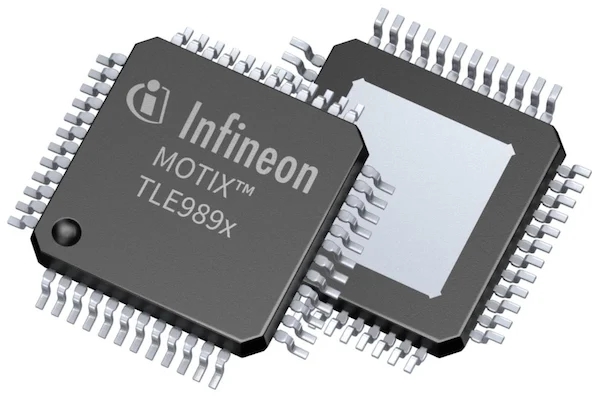意法半导体加快新功率晶体管的生产
As electronics become smaller, ST’s latest transistor family stands to shrink power electronics in tandem.
With the goal of providing more efficient performance for high-voltage, high-current applications, STMicroelectronics (ST) announced the volume production of two new GaN devices using its PowerGaN HEMT technology. As emerging industrial and automotive applications demand smaller and more efficient power electronics, ST’s new GaN transistors are said to offer improved performance over traditional silicon hardware. The PowerGaN series from STMicroelectronics promises improved performance over traditional silicon hardware, giving designers headroom to make power electronics smaller and more efficient.
The PowerGaN series from STMicroelectronics promises improved performance over traditional silicon hardware, giving designers headroom to make power electronics smaller and more efficient.
The latest announcement is not ST’s first venture into GaN electronics, with previous products targeting easy replacements for silicon hardware leveraging GaN’s efficiency boosts. The latest transistors, however, aim to provide designers with the best efficiency possible for the future of power electronics designs.
This article gives an overview of key specifications for the new devices and example applications that may benefit from them. We'll also touch on broader trends of the power electronics field to give readers a sense of how GaN devices are poised to provide better and smaller electronics for users and designers alike.
Smaller and Faster Switching
With the ever-growing need for efficient power converters, new topologies for DC-DC, AC-DC, and DC-AC converters are constantly being developed to provide designers with higher efficiency and performance. Generally, higher switching frequencies for these converters allow for better performance and smaller parts. However, silicon technology is approaching its fundamental limit for switching frequency. As such, GaN’s intrinsically faster characteristics make it suitable for next-generation devices..jpg)
GaN HEMTs leverage GaN’s wide bandgap to withstand higher voltage and operate at higher switching speeds, giving it a fundamental advantage over silicon.
ST’s latest announcement introduced two new GaN transistors: the SGT120R65AL and the SGT65R65AL, both of which support up to 650 V VDS and come equipped with a PowerFLAT SMD package and multiple cooling options. The SGT120R65AL (datasheet linked) has a 75 mΩ on-resistance and can support up to 15 A, while the SGT65R65AL (datasheet linked) has a 49 mΩ on-resistance and corresponding 25 A capacity. In addition, both transistors support a much faster switching speed compared to their silicon counterparts.
Efficient Power Conversion
ST has already identified several applications that may benefit from its PowerGaN technology, including car electrification, power supplies, and energy generation. The impact of PowerGaN, however, may be considerably larger given the product line's performance in highly-efficient power converters..jpg)
PowerGaN technology can be used in power electronics, such as a buck converter (shown here), to improve efficiency and performance while using smaller components thanks to the higher switching frequency.
From the specifications, however, it appears that any application where efficiency, thermal performance, or size is paramount may benefit from the PowerGaN lineup. The low on-resistance makes the devices inherently beneficial for high-current switching applications, while the low switching times allow for smaller passive components in DC-DC converters. Since almost all electronics require power conversion in some form, the PowerGaN family could prove to be useful for numerous power electronics applications.
A Tool for Every Application
The trend toward greater GaN adoption has opened more design possibilities for engineers in the power space. GaN's higher efficiency relaxes constraints on power budgets and thermal performance, while the shrinking size of passive components gives designers more room to include processing power or custom electronics in lieu of power conditioning circuits.
While GaN certainly does have its benefits compared to silicon in some applications, the future of the electronics industry will likely rely on a healthy synergy between silicon’s scalability and GaN's computational performance and power-handling capabilities to give designers the tools to innovate more efficient devices.



.jpg)